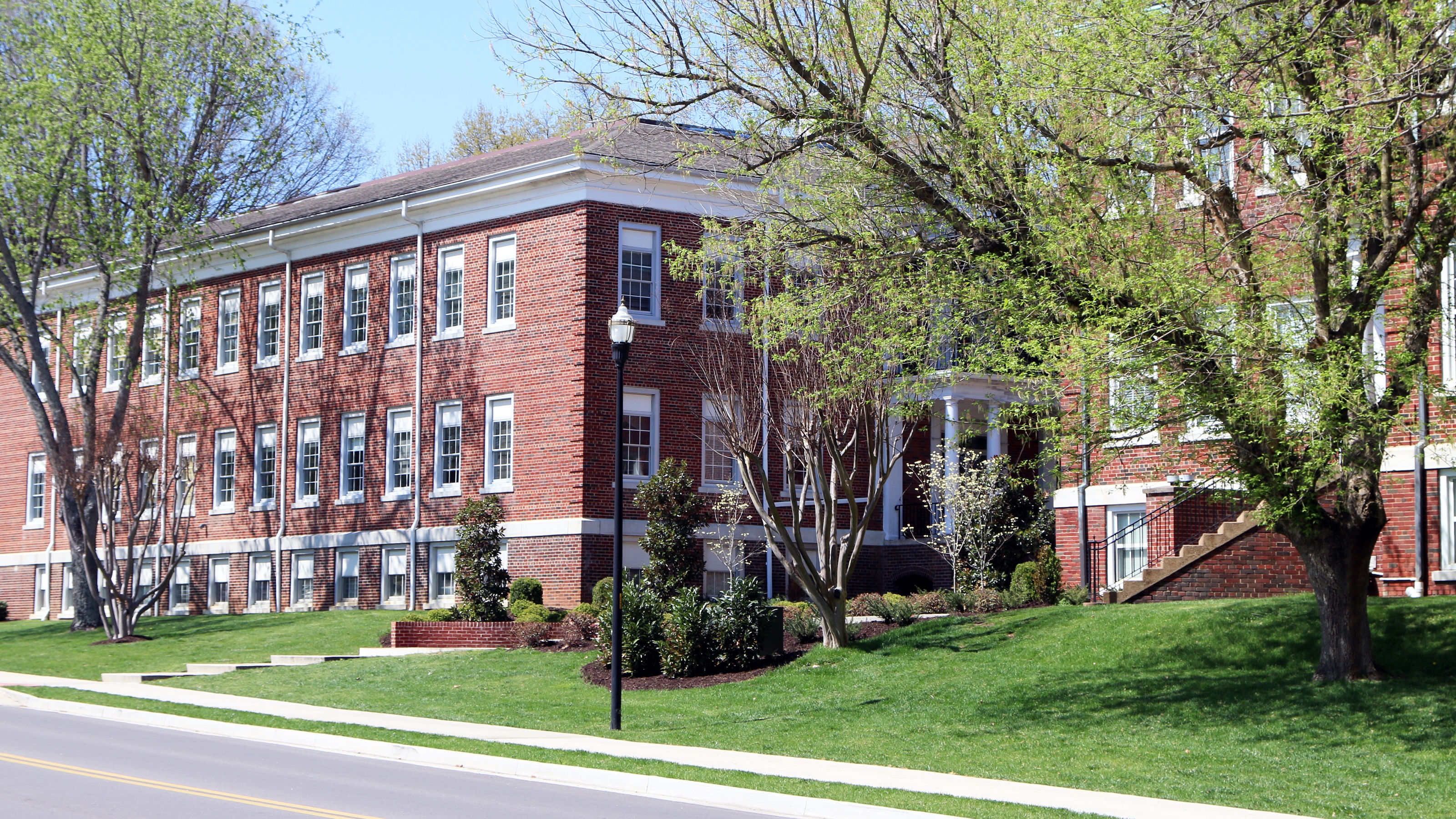Three Asset Classes Delaware Statutory Trust Investors Should Avoid
While all real estate investing has its risks, student housing, senior care facilities and hospitality properties face extra challenges.


When it comes to investing in a Delaware statutory trust (DST), investors should understand that not all asset classes are equal.
Typically, Delaware statutory trusts include core real estate asset classes such as retail, multifamily, net lease, industrial, medical office buildings and self-storage facilities. And while all real estate investing contains the potential for risk, when it comes to investors evaluating which asset classes to include in their Delaware statutory trust or 1031 exchange, the process should always start with what asset classes to avoid in order to mitigate the exposure to excessive risks associated with a specific asset class.
Kay Properties and Investments believes there are three asset classes DST investors should avoid when considering investing via either a 1031 exchange or direct cash investment, including:
From just $107.88 $24.99 for Kiplinger Personal Finance
Become a smarter, better informed investor. Subscribe from just $107.88 $24.99, plus get up to 4 Special Issues

Sign up for Kiplinger’s Free Newsletters
Profit and prosper with the best of expert advice on investing, taxes, retirement, personal finance and more - straight to your e-mail.
Profit and prosper with the best of expert advice - straight to your e-mail.
- Student housing
- Senior care facilities
- Hospitality properties
First DST 1031 asset class to avoid: Student housing
Let’s face it, there are a lot of very exotic asset classes that are pitched to 1031 exchange and Delaware statutory trust investors these days — oil and gas programs, solar farms, land sponsored by developers seeking cheaper financing than alternative sources from 1031 investors, sale leasebacks with private companies the sponsor is propping up with free rent and more. One of these asset classes to avoid is student housing.
Reason: Black swan events such as COVID-19.
The overall occupancy and performance of student housing relies on a single demand generator: the university or college. As a result, these assets can be negatively impacted by the local college or university. For example, the recent COVID-19 pandemic was a real black swan event that exposed just how vulnerable student housing is for investors, who saw dramatic increases in vacancy due to universities shutting down.
This resulted in lowered or suspended cash flow distributions to many 1031 DST investors for months and even years on their 1031 exchange investments. When the government forced many colleges and universities to shut down, many of the students went home and no longer had a need for student housing. This created a spiral for many DST student housing projects.
Investors should be aware that these risks are very real, and they should proceed with caution prior to investing in student housing. A quick internet search for “student housing foreclosure” will bring up many articles of horror stories for investors regarding student housing properties.
Second DST 1031 asset class to avoid: Senior care facilities
A second asset class that DST investors should be wary of is senior care facilities. The fascinating thing about senior care facilities, however, is that they have a very compelling story for the untrained eye. For example, Baby Boomers are the largest demographic in American history, and they are creating a rise in demand for senior care properties each and every year. This makes sense and sounds attractive.
However, the problem that is often overlooked is that senior care properties carry significant risks that can drastically impact a property’s net operating income (NOI) and the ability of the asset to pay investors' distributions and monthly lender debt service.
Reason #1: Senior care is a heavily regulated business.
Senior care is one of the most highly regulated industries in the nation, with licensing and permits required to operate such facilities. This includes a trend toward heightened regulation requiring more caregivers per tenant residents in recent years across many states. All of this is exacerbated by the fact that senior care properties are subject to random inspections, and infractions may be subject to a remediation period.
Any significant infractions could potentially result in a loss of the facility’s license, which would result in a loss of rental income, the ability to pay investor distributions and ultimately the ability to pay monthly lender debt service… resulting in foreclosure and complete loss of invested capital.
Reason #2: Senior care is a business with a real estate component.
Senior care is not a typical real estate investment like multifamily, medical office or even single-tenant net-lease property. Senior care is a business with a real estate component. So anyone investing in senior care carries not only the inherent risk of real estate investing, but now they are taking on additional business risk with a very vulnerable tenant base (the elderly). This places extraordinary pressure on the operator or company that is running these facilities, who can often face expensive and damaging litigation challenges.
Reason #3: High expenses.
Expense ratios for senior care properties are often much higher than traditional multifamily apartment properties due to several reasons. For example, these facilities obviously require dietary and nursing components, both costly line items that could impact potential returns for DST investors.
Senior care facilities also carry higher general liability insurance and workers’ compensation insurance requirements.
In addition, there is high staff turnover for senior care properties due to the ultra-demanding work of caring for elderly tenants combined with the relatively low wages that staff caregivers receive. As a result, staffing volatility can be extremely costly in the form of never-ending training costs, as well as having an impact on occupancy because of the resulting uncertainty for the residents and their family members.
Reason #4: Beware of lawsuits.
Unfortunately, due to the highly vulnerable nature of the elderly population who live at senior care facilities, the risk of owners facing litigation is much greater than with other traditional commercial real estate asset classes such as apartments, office, industrial and single-tenant net leases. A quick internet search will undoubtedly showcase dozens of senior care properties being sued by family members of their elderly residents.
Individually, these risk assessments can potentially be mitigated, but when taken in totality, the combination of regulatory pressures, licensing issues, high expenses and the potential for lawsuits can quickly destroy a DST’s cash flow and ability to meet monthly lender debt service.
Third DST 1031 asset class to avoid: Hospitality
Another asset class that has historically come with more inherent risks than traditional real estate asset classes is hospitality properties.
Reason #1: Boom and bust cycles.
Hotel property values tend to be very volatile, constantly in the cyclical motion of up and down. For example, following the Great Recession, hotel asset values fell more than 40% from their peak in 2006. After recovering in the subsequent years, the hotel investment asset class took another major hit during the pandemic.
According to the National Institutes of Health, U.S. hotel assets lost an excess of $46 billion in 2020, including the loss of 4.8 million hospitality jobs. This extreme volatility has been devastating to many hotel assets and therefore makes the asset class a very risky one indeed for real estate investors. Again, a quick internet search for “hotel foreclosure” will show myriad articles of recent high-profile hotel investors that had to hand the keys back to their lender.
Reason #2: Management intensity.
Hotels have the highest turnover of any asset class in the great real estate arena, with the average lease term expiring every 18 to 24 hours as guests come and go. As a result, the need to fill rooms is a constant battle, and a small glitch in marketing, a corporate change, a breakdown in reservation infrastructure or a pandemic can significantly affect the bottom line, which in turn can cause asset values to suffer immensely.
Reason #3: Shifting trends.
Because hotels rely heavily on their direct location or proximity to destination spots, relying on the fickle nature of “what’s cool” today combined with any changes in demographics can have a devastating impact on hotels. For example, a major hotel chain had to close its doors in San Francisco due to crime and a wave of homelessness.
Another trend that is impacting the hotel investment arena is the fact that corporate and leisure vacation travel has been declining due to recessionary pressures. In addition, hotel investors are being impacted by the reality that technology continues to remove the need for corporate travel and proves an easy way for companies to cut costs.
Reason #4: Financing risks and foreclosure.
Very often, hotels have large balloon mortgages whereby the property's loan comes due in five to 10 years. With the recent rise in interest rates, many hotel owners will be challenged to refinance and face the risk of foreclosure. According to the American Hotel & Lodging Association and Trepp, payments on nearly one-fourth of all loans backed by hotel real estate were delinquent during 2020 by at least 30 days, signaling an imminent and unprecedented wave of hotel foreclosures.
While all real estate investing carries risk, when it comes to investing in DST properties, investors should avoid these three asset classes and consider more traditional real estate investment real estate properties.
At Kay Properties, we encourage our clients to consider DST 1031 exchange investment asset classes that we witnessed performed well throughout the Great Financial Crisis, throughout the COVID-19 pandemic and throughout the recent rise in interest rates and ensuing market turmoil.
Of course, past performance is no guarantee of future results. However, we believe understanding the DST investments that have performed and those that have not performed is incredibly prudent for today’s 1031 exchange DST investor.
About Kay Properties and www.kpi1031.com: Kay Properties and Investments is a national Delaware Statutory Trust (DST) investment firm. The www.kpi1031.com platform provides access to the marketplace of DSTs from over 25 different sponsor companies, custom DSTs only available to Kay clients, independent advice on DST sponsor companies, and real estate research and analysis on each DST (typically 20-40 DSTs). Kay Properties team members collectively have over 200 years of real estate experience and have participated in over 30 billion of DST 1031 investments.
Past performance does not guarantee or indicate the likelihood of future results. Diversification does not guarantee profits or protect against losses. All real estate investments provide no guarantees for cash flow, distributions or appreciation as well as could result in a full loss of invested principal. Please read the entire Private Placement Memorandum (PPM) prior to making an investment. This case study may not be representative of the outcome of past or future offerings. Please speak with your attorney and CPA before considering an investment.
There are material risks associated with investing in real estate, Delaware Statutory Trust (DST) properties and real estate securities, including illiquidity, tenant vacancies, general market conditions and competition, lack of operating history, interest rate risks, the risk of new supply coming to market and softening rental rates, general risks of owning/operating commercial and multifamily properties, short-term leases associated with multifamily properties, financing risks, potential adverse tax consequences, general economic risks, development risks and long hold periods. All offerings discussed are Regulation D, Rule 506c offerings. There is a risk of loss of the entire investment principal. Past performance is not a guarantee of future results. Potential distributions, potential returns, and potential appreciation are not guaranteed. For an investor to qualify for any type of investment, there are both financial requirements and suitability requirements that must match specific objectives, goals, and risk tolerances. Securities offered through FNEX Capital, member FINRA, SIPC.
Profit and prosper with the best of Kiplinger's advice on investing, taxes, retirement, personal finance and much more. Delivered daily. Enter your email in the box and click Sign Me Up.

Dwight Kay is the Founder and CEO of Kay Properties and Investments LLC. Kay Properties is a national 1031 exchange investment firm specializing in Delaware statutory trusts. The www.kpi1031.com platform provides access to the marketplace of typically 20-40 DSTs from over 25 different sponsor companies. Kay Properties team members collectively have over 340 years of real estate experience, have participated in over $39 billion of DST 1031 investments, and have helped over 2,270 investors purchase more than 9,100 DST investments nationwide.
-
 How to Plan a Microvacation That Actually Feels Restful
How to Plan a Microvacation That Actually Feels RestfulHow a simple long weekend can boost your mood, reduce stress and make winter feel shorter.
-
 We're retired and fight more than ever. Should we take a break?
We're retired and fight more than ever. Should we take a break?Can taking a break save a marriage? We asked professional relationship therapists for advice.
-
 Turning 59½: 5 Planning Moves Most Pre-Retirees Overlook
Turning 59½: 5 Planning Moves Most Pre-Retirees OverlookAge 59½ isn't just when you can access your retirement savings tax-free. It also signals the start of retirement planning opportunities you shouldn't miss.
-
 Turning 59½: 5 Planning Moves Most Pre-Retirees Overlook
Turning 59½: 5 Planning Moves Most Pre-Retirees OverlookAge 59½ isn't just when you can access your retirement savings tax-free. It also signals the start of retirement planning opportunities you shouldn't miss.
-
 Are Your Retirement Numbers Not Looking Good? A Financial Adviser Runs Through Your Options
Are Your Retirement Numbers Not Looking Good? A Financial Adviser Runs Through Your OptionsIf you're worried about a shortfall between your income and expenses in retirement, you're not alone. But there are ways you can make up the difference.
-
 How to Make the Most of These 2 Tax Breaks ASAP (They Have Expiration Dates)
How to Make the Most of These 2 Tax Breaks ASAP (They Have Expiration Dates)Taxpayers can strategically use these temporary tax opportunities in particular to lock in long-term tax savings. Here's how.
-
 What Changed on January 1: Check Out These Opportunities Created by the New Tax Law
What Changed on January 1: Check Out These Opportunities Created by the New Tax LawA deep dive into the One Big Beautiful Bill Act (OBBBA) reveals key opportunities in 2026 and beyond.
-
 Beat the Money Blues With This Easy Financial Check-In to Get 2026 Off to a Good Start
Beat the Money Blues With This Easy Financial Check-In to Get 2026 Off to a Good StartAs 2026 takes off, half of Americans are worried about the cost of everyday goods. A simple budget can help you beat the money blues and reach long-term goals.
-
 Do Self-Storage REITs Deserve Space in Your Portfolio? It's a Yes From This Investment Adviser
Do Self-Storage REITs Deserve Space in Your Portfolio? It's a Yes From This Investment AdviserSelf-storage is an overlooked area of the real estate market, even though demand is strong. Investors can get in on the action through a REIT.
-
 4 Simple Money Targets to Aim for in 2026 (And How to Hit Them), From a Financial Planner
4 Simple Money Targets to Aim for in 2026 (And How to Hit Them), From a Financial PlannerWhile January is the perfect time to strengthen your financial well-being, you're more likely to succeed if you set realistic goals and work with a partner.
-
 Estate Planning Isn't Just for the Ultra-Wealthy
Estate Planning Isn't Just for the Ultra-WealthyIf you've acquired assets over time, even just a home and some savings, you have an estate. That means you need a plan for that estate for your beneficiaries.